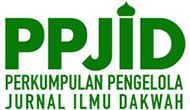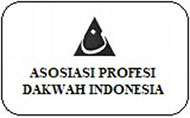Reclaiming Traditional Religious Authority in the Contemporary Era
Abstract
Existing studies have highlighted that traditional religious authorities can survive and adapt to technological and communication developments. However, previous studies did not reveal whether the traditional religious authority could adapt independently or whether other actors helped strengthen their authority and popularity on social media. This article focuses on several questions about why traditional religious authorities engage with Muslim youth and how they repackage their clerics to suit the culture of urban Muslim youth. Based on virtual ethnographic work carried out from 2021 to 2022 and personal communication with one of the Muslim youth involved with traditional religious authorities on social media, this article shows that Ustaz Abdul Somad and Ustaz Hanan Attaki, who are part of traditional religious authorities, can adapt to technological developments thanks to the support of Muslims youth. The consequence of this support is that they adapt youth culture to repackage their ulama.
Keywords
Full Text:
PDFReferences
Akmaliah, W. (2020a). The demise of moderate Islam: New media, contestation, and reclaiming religious authorities. Indonesian Journal of Islam and Muslim Societies, 10(1), 1–24. https://doi.org/10.18326/ijims.v10i1.1-24
Akmaliah, W. (2020b). The Rise of Cool Ustadz: Preaching, Subcultures, and the Pemuda Hijrah Movement. In Norshahril Saat & A. N. Burhani (Eds.), The new Santri: Challenges to Traditional Religious Authority in Indonesiahallenges to Traditional Religious Authority in Indonesia (pp. 239–257). Singapore: ISEAS Publishing.
B-PRAST HD. (2019). Kisah Sukses Dakwah Ustadz Hannan Attaki & Asal Mula “SHIFT” | Ustadz Hannan Attaki. Retrieved from B-PRAST HD website: https://www.youtube.com/watch?v=XaWANQiXOqs
Barentsen, J. (2019). The Religious Leader as Social Entrepreneur. In S. C. van den H. Luk & Bouckaert (Eds.), The Will to Serve: Inspiring Models of Servant Leadership and Social Entrepreneurship (pp. 235–253). New York: Palgrave Macmillan.
Bayat, A. (2005). Islamism and Social Movement Theory. Third World Quarterly, 26(6), 891–908. https://doi.org/10.1080/01436590500089240
Bayat, A. (2007). Islamism and the Politics of Fun. Public Culture, 19(3), 433–459. https://doi. org/10.1215/08992363-2007-004
Better Youth. (2019). MKM Talk Eps. 15 ‘Ngobrol Bareng Kang Inong Shift. Retrieved from Better Youth website: https://www.youtube.com/watch?v=GTxHxT0hkgw
Brinton, J. G. (2015). Preaching Islamic Renewal: Religious Authority and Media in Contemporary Egypt. California: University of California Press.
Burhani, A. N. (2020). Muslim Televangelists in the Making: Conversion Narratives and the Construction of Religious Authority. The Muslim World, 110(2), 154–175. https://doi.org/10.1111/muwo.12327
Burhanudin, J. (2010). Traditional Islam and Modernity: Some Notes on the Changing Role of the Ulama in Early Twentieth Indonesia. In A. Azra, K. Van Dijk, & N. J. G. Kaptein (Eds.), Varieties of Religious Authority: Changes and Challenges in 20th Century Indonesian Islam (pp. 54–72). Singapore: ISEAS Publishing. https://doi.org/10.4324/9780203630372-17
Campbell, H. A. (2021). Digital Creatives and the Rethinking of Religious Authority. New York: Routledge. https://doi.org/10.4324/9781003045625
Cloete, A. L. (2016). Mediated religion: Implications for religious authority. Verbum et Ecclesia, 37(1), 1–6. https://doi.org/10.4102/ve.v37i1.1544
CNN Indonesia. (2019). Shift, Gerbang Masuk Anak Muda Bandung Menuju Hijrah. Retrieved from CNN Indonesia website: https://www.cnnindonesia.com/nasional/20190610062027-20-401957/shift-gerbang-masuk-anak-muda-bandung-menuju-hijrah
Echchaibi, N. (2014). Media Spaces for a Muslim Voice. In J. H. Mahan (Ed.), Media, Religion and Culture: An Introduction (pp. 82–83). London and New York: Routledge.
Echchaibi, N. (2011). From audio tapes to video blogs: the delocalisation of authority in Islam. Nations and Nationalism 17 (1), 25–44.
Eickelman, D. F., & Anderson, J. W. (2003). New Media in the Muslim World: The Emerging Public Sphere. Blooming: Indiana University Press.
Eickelman, D. F., & Piscatori, J. (1996). Muslim Politics. Princeton: Princeton University Press.
Feener, R. M. (2014). Muslim Religious Authority in Modern Asia. Asian Journal of Social Science, 42(5), 501–516. https://doi.org/10.1163/15685314-04205002
Fodamara TV. (2017). Tausyiah Pemuda & Remaja-Ustadz Abdul Somad Lc.MA. Retrieved from Fodamara TV website: https://www.youtube.com/watch?v=uIM5bo3Llys
Fodamara TV. (2020). Jamaah UAS Ramai Banget Di Vlog Ke 2 Ngeliput Kajian Ustadz Abdul Somad. Retrieved from Fodamara TV website: https://www.youtube.com/watch?v=hzNu48qXs5c
Fodamara TV. (n.d). “Dokumen Fodamara TV.”
Giorgi, A. (2019). Mediatized catholicism—minority voices and religious authority in the digital sphere. Religions, 10(8), 1–21. https://doi.org/10.3390/rel10080463
Gräf, B. (2014). Media Fatwas and Fatwa Editors: Challenging and Preserving Yusuf al-Qaradawi’s Religious Authority. In L. Hudson, A. Iskandar, & M. Kirk (Eds.), Media Evolution on the Eve of the Arab Spring (pp. 139–157). New York: Palgrave Macmillan. https://doi.org/https://doi.org/10.1057/9781137403155
Hagomoro, H. & Yogaswara, Y. (2013). Spiritual Riding: Dakwah on the Street Bersama Ustadz Jefri Al-Bukhori. Solo: Tiga Serangkai.
Han, M. I. (2018). Anak Muda, Dakwah Jalanan dan Fragmentasi Otoritas Keagamaan: Studi Atas Gerakan Dakwah Pemuda Hijrah dan Pemuda Hidayah. UIN Sunan Kalijaga Yogyakarta.
Hefner, R. W. (1993). Islam, State, and Civil Society: ICMI and the Struggle for the Indonesian Middle Classes. Indonesia (56), 1–35.
Herding, M. (2013). Inventing the Muslim Cool: Islamic Youth Culture in Western Europe. Bielefeld: Transcript Verlag.
Hoesterey, J.B.. (2017). Marketing Islam: Entrepreneurial Ethics and the Spirit of Capitalism in Indonesia. Practical Matters Journal, 10(10), X–XXX.
Hou, M. (2019). Social media celebrity and the institutionalization of YouTube. Convergence: The International Journal of Research into New Media Technologies, 25(3), 534–553.
Howell, J. D. (2008). Modulations of Active Piety: Professors and Televangelists as Promoters of Indonesian ‘Sufisme.’ In Greg Fealy & Sally White (Eds.), Expressing Islam: Religious Life and Politics in Indonesia (Pp. 40-62). Singapore: ISEAS Publishing.
Kailani, N. (2018). Islam in Southeast Asia: Negotiating Modernity. In N. Saat (Ed.), Islam in Southeast Asia: Negotiating Modernity (Pp. 164–94). Singapore: ISEAS-Yusof Ishak Institute.
Kailani, N., & Sunarwoto. (2019). Televangelisme Islam dalam Lanskap Otoritas Keagamaan Baru. In N. Hasan (Ed.), Ulama dan Negara Bangsa: Membaca Masa Depan Islam Politik di Indonesia (pp. 179–206). Yogyakarta: Pusat Pengkajian Islam, Demokrasi, dan Perdamaian (PusPIDeP).
Kiapel Dakwah. (2020). Fiqih Sosial Media -Ust. Hanan Attaki, Lc.
Kingsley, J. J. (2014). Redrawing lines of religious authority in Lombok, Indonesia. Asian Journal of Social Science, 42(5), 657–677. https://doi.org/10.1163/15685314-04205010
Kozinets, R. V. (2019). Netnography: The Essential Guide to Qualitative Social Media Research. 3rd ed. London: SAGE.
Lestari, P. (2022). Tradisi Penulisan dan Pengajaran Kitab Pesantren: Proses Membangun Otoritas dalam Kitab Kuning. Jurnal Kajian Islam Interdisipliner, 17(2), 189-209.
Luik, J. (2020). Media Baru: Sebuah Pengantar. Jakarta: Kencana.
Muzakki, A. (2012). Islamic Televangelism in Changing Indonesia: Transmission, Authority, and the Politics of Ideas. In P. N. Thomas & P. Lee (Eds.), Global and Local Televangelism (pp. 45–63). UK: Palgrave Macmillan.
Pribadi, Y. (2020). Pop and “True” Islam in Urban Pengajian: The Making of 213 Religious Authority. In N. Saat & A. N. Burhani (Eds.), The new Santri: Challenges to Traditional Religious Authority in Indonesia (pp. 213–238). Singapore: ISEAS Publishing.
Rakhmani, I. (2016). Mainstreaming Islam in Indonesia Television, Identity, and the Middle Class. New York: Palgrave Macmillan. https://doi.org/10.1057/978-1-137-54880-1_1
Rinker, C. H., Roof, J., Harvey, E., Bailey, E., & Embler, H. (2016). Religious apps for smartphones and tablets: Transforming religious authority and the nature of religion. Interdisciplinary Journal of Research on Religion, 12, 1–13.
Roy, O. (1994). The Failure of Political Islam. Cambridge dan Massachusetts: Harvard University Press.
Setia, P., & Dilawati, R. (2021). Tren Baru Islam melalui Gerakan Hijrah: Studi Kasus Shift Pemuda Hijrah. Khazanah Theologia, 3(3), 131-146.
Smith-Hefner, N. J. (2007). Javanese Women in the Veil in Post-Soeharto Indonesia. Journal of Asian Studies 66(2), 389–420.
Soares, R. I. J. H. B. F. (2015). Introduction: New Media and Religious Transformations in Africa. In New Media and Religious Transformations in Africa (pp. 1–18). Bloomington: Indiana University Press.
Sofjan, D., & Mega, H. (2013). Religion and Television in Indonesia: Ethics Surrounding Dakwahtainment. Geneva: Globethics.ne.
Suhadi, & Suseno, M. N. (2019). Ulama dan Negara-Bangsa dalam Survei. In N. Hasan (Ed.), Ulama dan Negara Bangsa: Membaca Masa Depan Islam Politik di Indonesia (pp. 17–43). Yogyakarta: Pusat Pengkajian Islam, Demokrasi, dan Perdamaian (PusPIDeP).
Triantoro, D. A. (2019a). Ustaz Abdul Somad, Otoritas Karismatik, dan Media Baru. UIN Sunan Kalijaga Yogyakarta.
Triantoro, D. A. (2019b). Ustaz Abdul Somad: Ustaz Karismatik Dunia Digital. Yogyakarta: Diandra Kreatif dan Omah Ilmu Publishing.
Turner, B. S. (2007). Religious Authority and the New Media. Theory, Culture & Society, 24(2), 117–134. https://doi.org/10.1177/0263276407075001
Whyte, S. A. (2022). Islamic Religious Authority in Cyberspace: A Qualitative Study of Muslim Religious Actors in Australia. Religions, 13(1), 1–16. https://doi.org/10.3390/rel13010069
Zaid, B., Fedtke, J., Shin, D. D., El Kadoussi, A., & Ibahrine, M. (2022). Digital Islam and Muslim Millennials: How Social Media Influencers Reimagine Religious Authority and Islamic Practices. Religions, 13(4). https://doi.org/10.3390/rel13040335
Zaman, M. Q. (2002). The Ulama in Contemporary Islam: Custodians of Change. Princeton and Oxford: Princeton University Press. https://doi.org/10.5860/choice.40-5188
Zaman, M. Q. (2009). The Ulama and Contestations on Religious Authority. In M. K. Masud, A. Salvatore, & M. van Bruinessen (Eds.), Islam and Modernity: Key Issues and Debates (pp. 206–236). Edinburgh: Edinburgh University Press.
DOI: http://dx.doi.org/10.24014/jdr.v34i1.21848
Refbacks
- There are currently no refbacks.

This work is licensed under a Creative Commons Attribution-ShareAlike 4.0 International License.
Editorial Office:
2nd Floor, Building of Faculty of Da'wah and Communication, Universitas Islam Negeri Sultan Syarif Kasim Riau. Jl. HR Soebrantas Km 15, Simpangbaru, Tampan, Pekanbaru
Email : jurnalrisalah@uin-suska.ac.id

This work is licensed under a Creative Commons Attribution-ShareAlike 4.0 International License.














